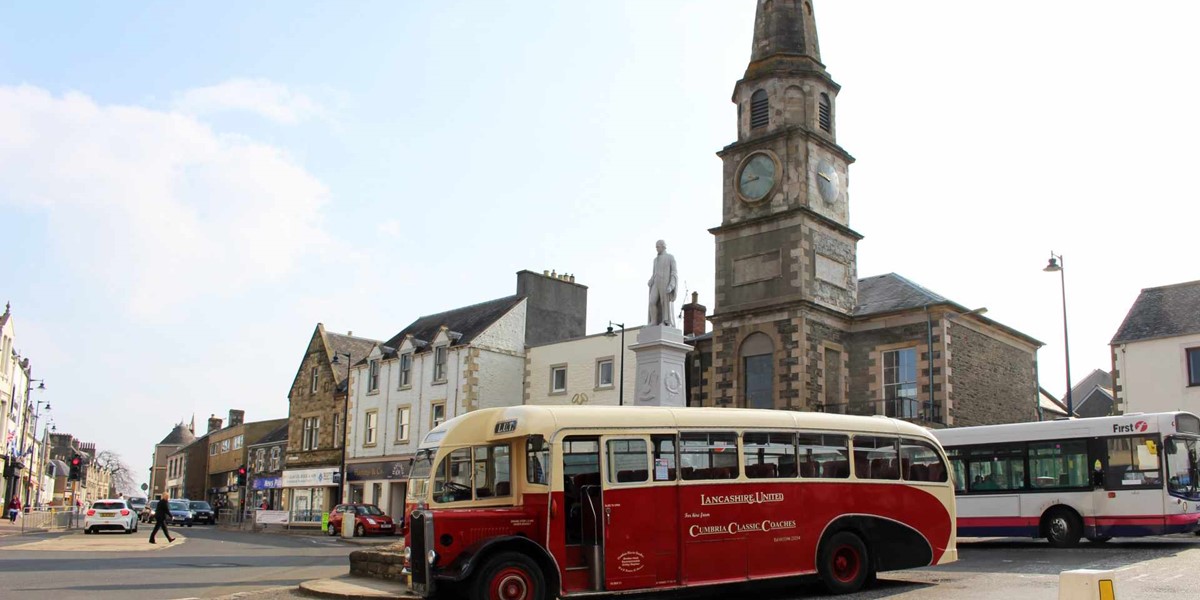An insight into Selkirk’s Property Market

In April, we caught up with Jim Harold- a Director at our Selkirk office- to ask him a few questions about Selkirk’s property market and to hear about Jim’s career in surveying.
Q: How long have you been working in the property industry and how long have you been with Allied?
A: I left GCBP in 1986 to work in London, returning to Glasgow in the early 1990’s. I joined Allied in January 2002 so I’ve been with the firm for 19 years.
Q: Have you always worked within valuation?
A: No. I qualified as a chartered Building Surveyor in 1989, initially specialising in office refurbishment and fitting out, later moving on to project management and other areas such as building pathology and dilapidations. I made the move across to valuation about seven years ago, initially to provide cover for a colleague who was on maternity leave and never looked back!
Q: What is the market like in Selkirk just now? And how has COVID19 affected it?
A: That is an interesting question actually. Prior to the COVID19 pandemic and resulting lockdowns, the residential property market in the borders was doing well, with demand and values both increasing. I should however point out that the Selkirk office covers the whole of the Borders region from TD1 (Galashiels) to TD15 (Berwickshire). This covers a range of towns and communities where values can differ significantly. So some areas were doing better than others. Rural and semi-rural properties were starting to show signs of recovery, having attracted little interest in the previous few years. When we came out of lockdown in June 2020, we were uncertain as to what to expect although rumours had persisted of a built up latent demand. The reality was that the market took off, particularly at the higher end. Large detached properties with land became very attractive and within a short period, the same applied pretty much across the board to most parts of the region, from 1 bed flats to large country estates. Recent activity following the easing of lockdown 2 would suggest that this is set to continue.
Q: What sort of properties are selling fast in Selkirk?
A: Again, we need to look at the Borders as a region as things vary from town to town. Larger properties (over £500,000) are selling and aren’t staying on the market for very long at all. I’ve recently been involved in half a dozen sales ranging from £1.2million to £3.5million, with properties valued at £500,000 -£750,000 now being commonplace, whereas 12 months ago, these type of instructions came up occasionally. However, that doesn’t tell the full story. Market activity has been buoyant across the board with anything of quality selling in days or going to closing date. The buy to let market has also seen a recent uplift.
Q: How do you think the Selkirk market will hold up over the next 6 months to a year?
A: As we slowly come out of the second lockdown restrictions, all indications are 2021 will carry on where 2020 left off. This would however have to be caveated in terms of the strength of the UK economy overall and any knock on effect that may result from the forthcoming Scottish Parliamentary elections.
Q: And finally, can you tell us anything about Selkirk that people may not know?
A: Selkirk is known as “The Royal and Ancient Burgh” and is one of the oldest royal Burghs in Scotland. It was also the county town of Selkirkshire. The people of the town are known as Souters, which means cobblers (shoe makers and menders) and the current population is just under 6,000. Like many borders towns, Selkirk is closely associated with the weaving industry, although few of the original mills remain. Local worthy’s include James Hogg “The Ettrick Shepherd”, Mungo Park, the African explorer and Sir Walter Scott, who was the town’s Sheriff for many years and lived at nearby Abbotsford, where he wrote most of his famous works. Selkirk also boasts the oldest horse racing track in Scotland – the Gala Rig, where races are still held annually. “The Kirk of the Forest” lies at the centre of the town’s ancient graveyard and is where William Wallace was appointed Guardian of Scotland after his victory over the English at Stirling Bridge in 1297. The battle of Philiphaugh was fought just outside the town on the site that is now the town’s rugby and cricket fields and where victory by the covenanters under David Leslie in 1645 effectively put an end to the Jacobite uprising led by James Graham Marquess of Montrose. In June each year, the town holds its “common riding” where up to 300 horses led by the Royal Burgh Standard Bearer ride the town’s boundaries, a tradition dating back to the 12th This culminates in a gathering in the market square where the town’s flags are cast by the standard bearers in memory of the Souters who died fighting for King James IV at the battle of Flodden in 1513. If you happen to be passing on the second Friday in June, this ancient tradition is well worth the effort and once witnessed is never forgotten.

Share